
Roots
The quiet hours of night, a time for rest and renewal, often bring with them a peculiar morning dilemma for those with textured hair ❉ the unexpected emergence of frizz. This common experience, a subtle shift from defined coils and waves to a less orderly presentation, prompts a thoughtful inquiry. Can the simple act of covering textured hair before slumber truly stand as a guard against this morning transformation? It is a question that invites us to look closely at the very nature of our strands, their ancestral stories, and the subtle dance of moisture and environment.

The Architecture of Textured Hair
To truly comprehend why covering our hair at night holds such significance, we must first appreciate the remarkable architecture of textured hair itself. Unlike straight strands, which possess a more uniform, cylindrical shape, textured hair—be it wavy, curly, or coily—exhibits an elliptical or flattened cross-section. This unique geometry, combined with the way hair grows from its follicle, creates a series of bends and twists along each strand.
These curves, while giving textured hair its captivating character, also mean that the outermost protective layer, the Cuticle, is not as uniformly sealed as on straight hair. Imagine tiny, overlapping scales, like those on a pinecone; on a curved strand, these scales are more prone to lifting, especially at the bends.
This inherent structural quality directly influences how textured hair interacts with moisture. The natural oils, or Sebum, produced by the scalp find it more challenging to travel down the length of a twisted, spiraling strand compared to a straight one. This often leaves the mid-lengths and ends of textured hair more susceptible to dryness.
When hair lacks sufficient moisture, it actively seeks it from the surrounding atmosphere. This phenomenon, known as Hygral Expansion, causes the hair shaft to swell unevenly, leading to the familiar halo of frizz.
Understanding the unique architecture of textured hair, with its naturally lifted cuticles and challenge in sebum distribution, reveals why it is inherently more susceptible to frizz.
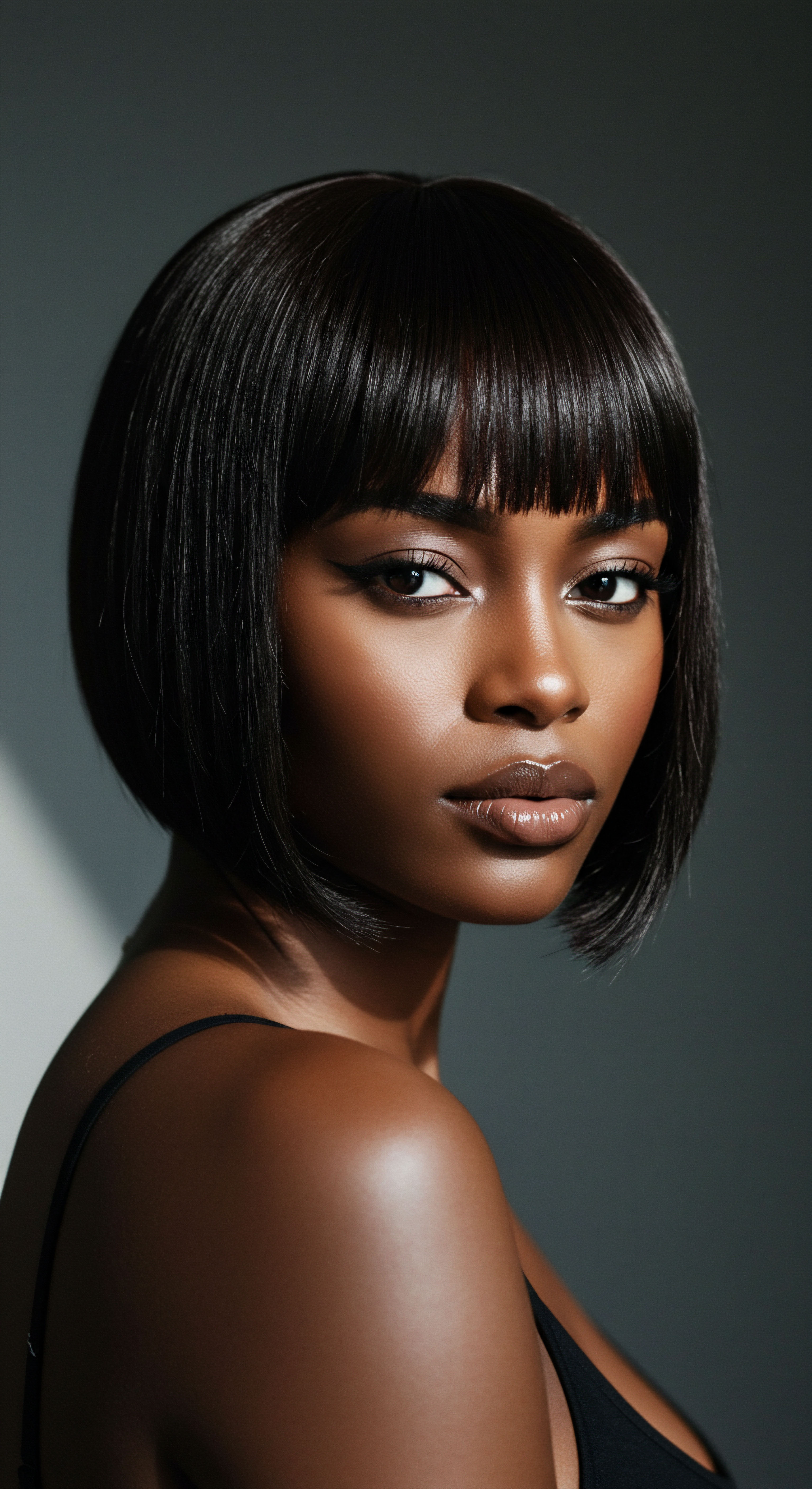
Understanding Hair’s Daily Moisture Exchange
Our hair is in constant conversation with its environment, a dialogue heavily influenced by humidity levels. During the day, exposure to fluctuating moisture in the air can cause strands to absorb or release water, leading to swelling or contracting. At night, this exchange continues, often exacerbated by the friction of sleep.
As we move, our hair rubs against surfaces, creating mechanical stress. This friction further lifts those already delicate cuticles, providing more avenues for moisture to escape from within the hair shaft or for excess humidity to rush in, both contributing to a frizzy appearance.

What Does Hair’s Classification Reveal About Frizz?
Various classification systems exist to describe textured hair, from the widely known Andre Walker system (types 2A-4C) to more nuanced approaches that consider curl pattern, density, and porosity. While these systems offer a helpful vocabulary for discussing hair, they also subtly underscore the diversity of needs within the textured hair community. A 4C coil, with its tight, Z-shaped pattern, will present different moisture retention challenges and frictional vulnerabilities than a looser 3A curl. Each hair type, with its specific structural characteristics, reacts uniquely to environmental stressors and mechanical forces during sleep, influencing the degree of morning frizz.
- Hair Anatomy ❉ Textured hair’s elliptical cross-section and natural bends make its cuticle layers more prone to lifting.
- Moisture Balance ❉ The natural oils from the scalp struggle to coat the entire length of coiled strands, leading to inherent dryness.
- Environmental Interaction ❉ Dry hair actively seeks moisture from the air, causing uneven swelling and frizz, especially with nighttime friction.

Ritual
The rhythm of our daily lives extends into the quiet of the night, and for textured hair, these evening hours present a significant opportunity for protection and preservation. Far from a mere cosmetic concern, the morning presentation of our strands reflects the diligent care, or lack thereof, offered during sleep. The pursuit of serene, defined coils upon waking leads us to consider the purposeful rituals of covering hair, a practice deeply rooted in both practical wisdom and a profound respect for hair health.
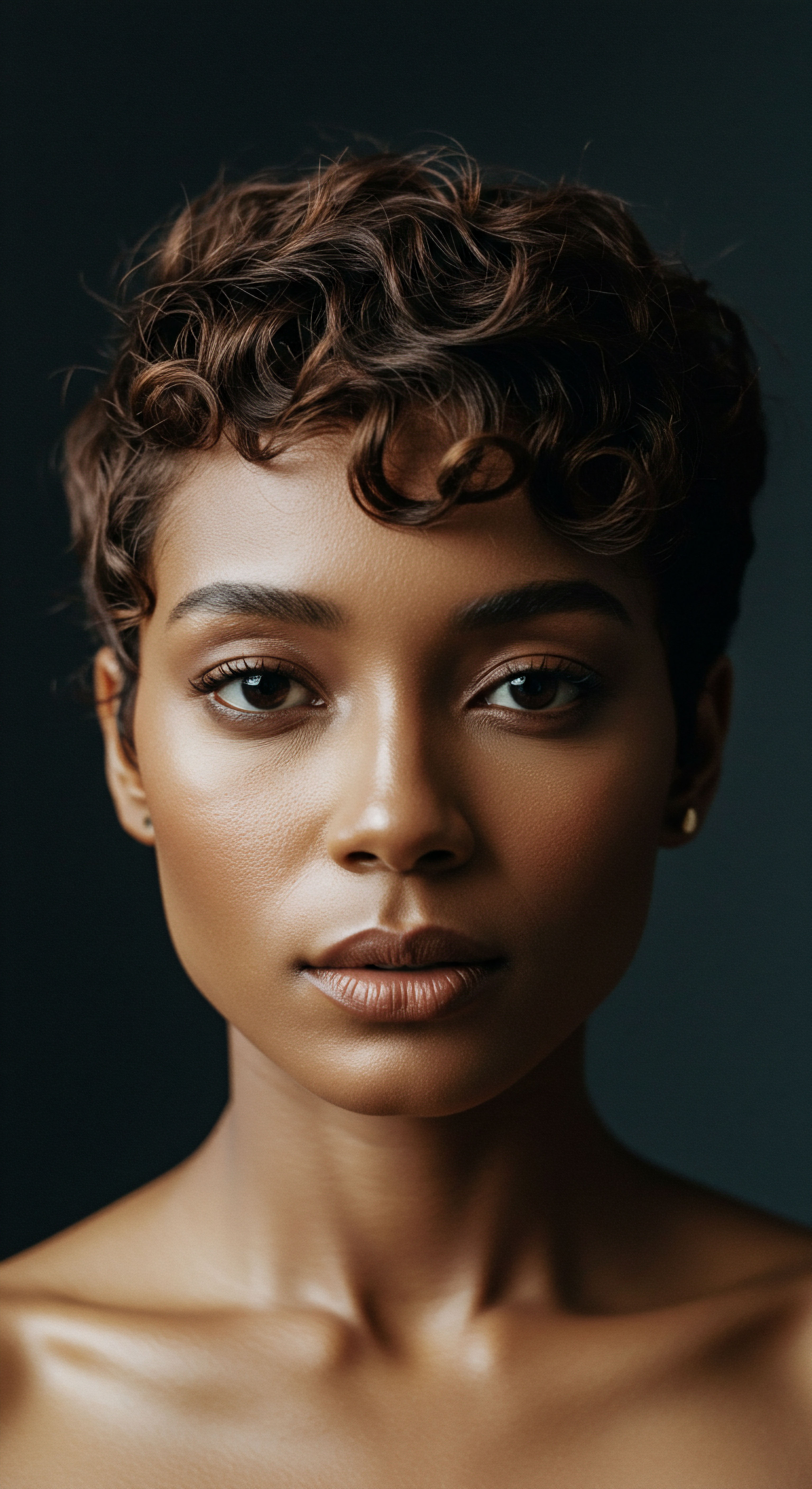
The Nighttime Sanctuary Essential Sleep Protection
As we drift into sleep, our hair, left exposed, becomes vulnerable to the abrasive realities of pillowcases. Cotton, a common bedding material, with its absorbent nature and woven fibers, can act like a thirsty sponge, drawing essential moisture from our hair. Simultaneously, the constant shifting and turning of the head create mechanical friction, causing the hair’s outer cuticle layer to lift and roughen. This dual assault of moisture depletion and cuticle disruption is a primary contributor to morning frizz, tangles, and even breakage.
This is where the wisdom of hair coverings truly shines. By placing a barrier between delicate textured strands and the potential aggressors of bedding, we create a sanctuary for our hair. This simple yet effective measure works on multiple fronts to preserve moisture and minimize physical disturbance, allowing our hair to maintain its structure and definition through the night.
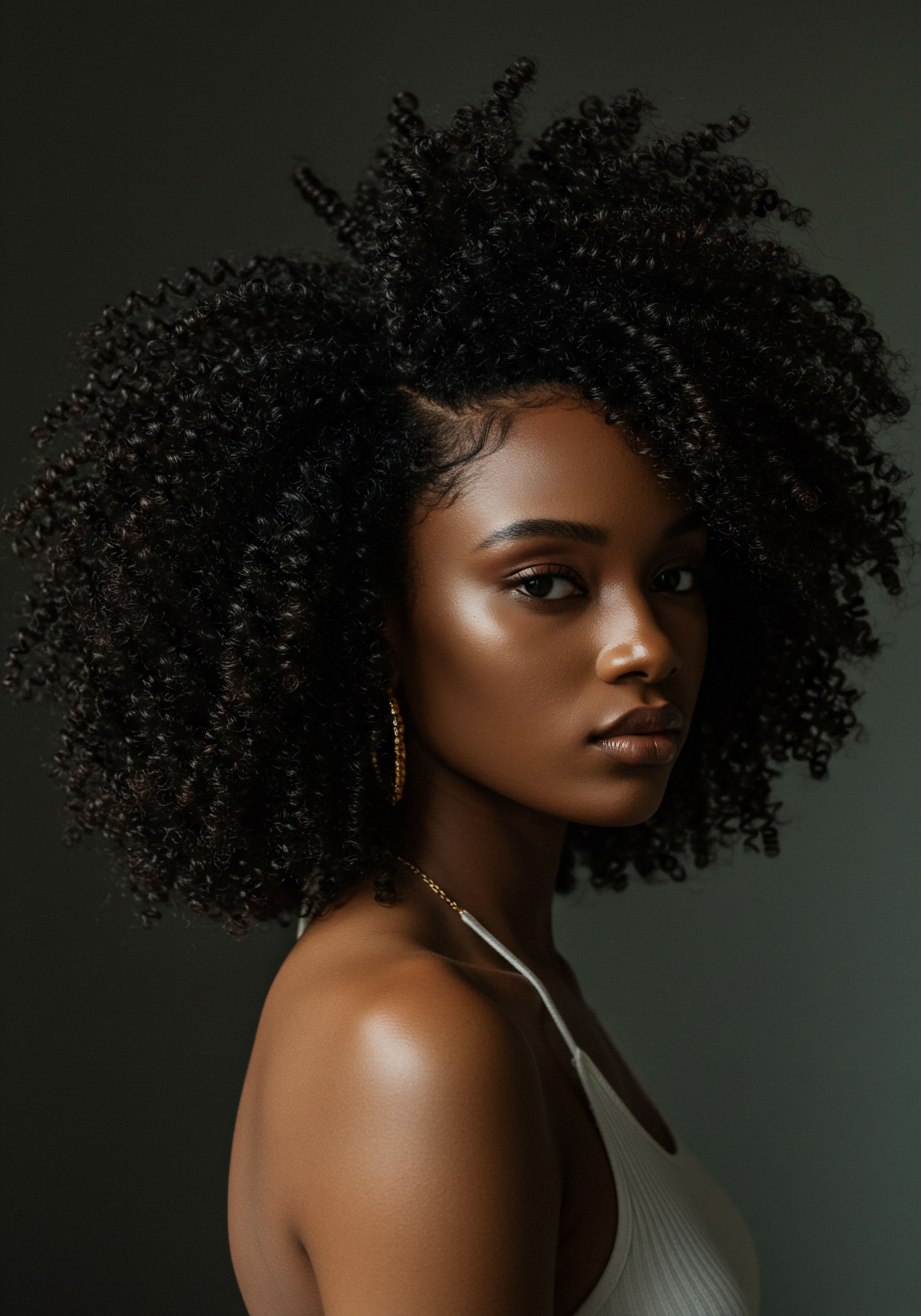
What Materials Offer the Best Nighttime Protection?
The choice of material for nighttime hair coverings is paramount. Not all fabrics are created equal when it comes to safeguarding textured hair.
- Silk ❉ Widely celebrated for its smooth surface, silk creates minimal friction against hair strands. Its natural protein structure helps hair retain its moisture, rather than absorbing it.
- Satin ❉ Often a more accessible alternative to silk, satin, a weave rather than a fiber, also offers a slick surface that allows hair to glide, reducing friction and moisture loss.
- Cotton ❉ As previously discussed, cotton’s absorbent and fibrous nature makes it less ideal for direct contact with textured hair during sleep.
A study conducted by TRI Princeton researchers, including Dr. Ernesta Malinauskyte, Dr. Xuzi Kang, and Dr. Marcella Gabarra, investigated the friction between hair and various fabrics.
Their findings indicated that Luxury Silk was the Smoothest Material, demonstrating significantly less friction than cotton and even velvet. This research underscores the physical advantage of smooth, low-friction materials in protecting hair from mechanical damage during sleep.
Strategic nighttime covering, particularly with silk or satin, forms a vital barrier against moisture loss and frictional damage, thereby preserving textured hair’s delicate structure.
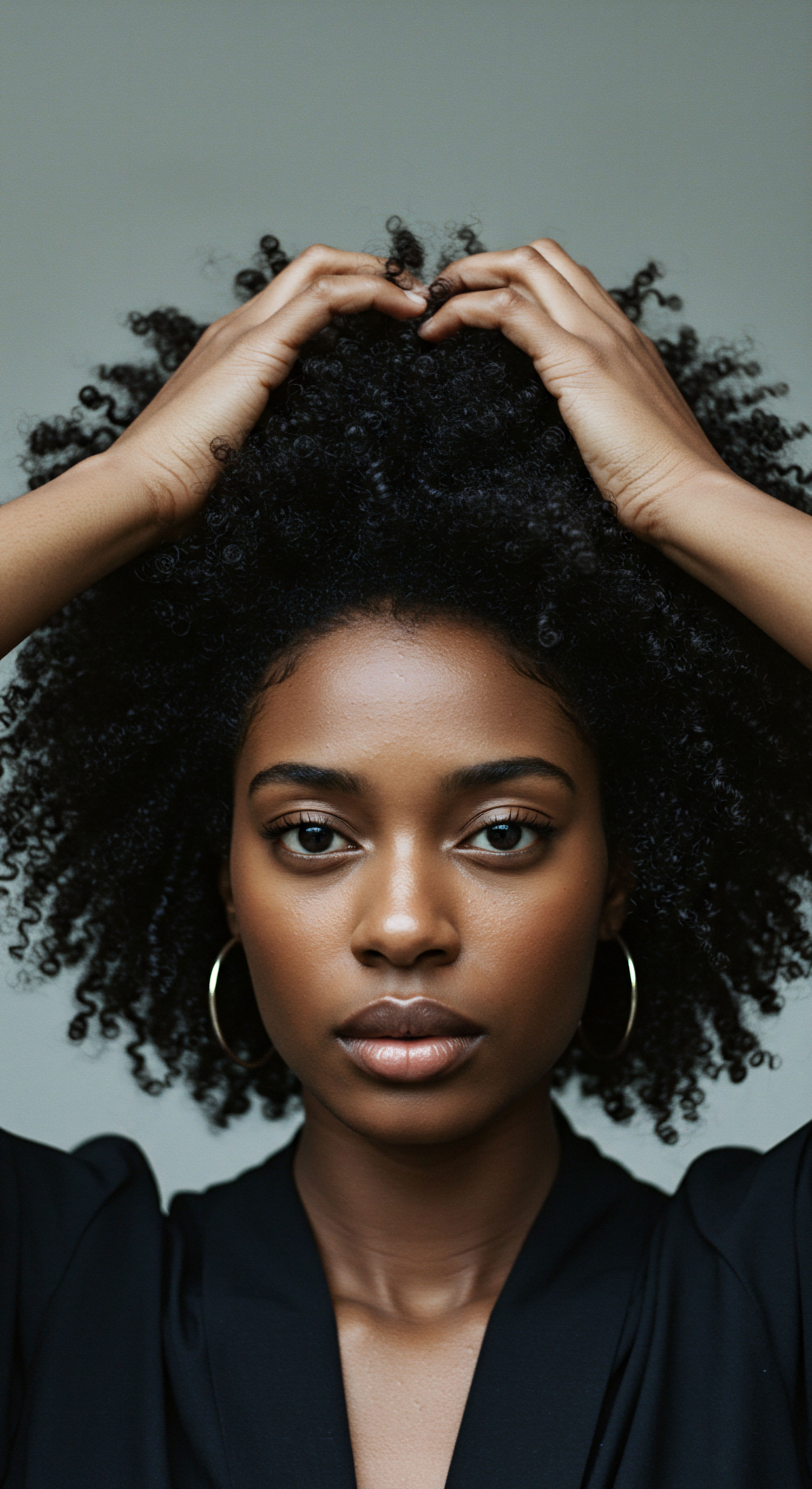
Practical Application of Hair Coverings
Incorporating hair coverings into a nightly routine is straightforward and offers immediate benefits.

How Do Bonnets and Scarves Prevent Frizz?
Bonnets and scarves, traditionally worn across various cultures for both protection and style, serve as effective physical barriers. They encapsulate the hair, creating a micro-environment that helps maintain moisture levels. The smooth inner lining, typically silk or satin, allows hair to move freely without snagging or roughening the cuticle. This minimizes the friction that leads to frizz and tangles, preserving the hair’s natural curl pattern.
When hair is confined within a bonnet or scarf, it is also protected from direct contact with the pillowcase, regardless of the pillowcase material. This is particularly beneficial for those who toss and turn frequently during sleep, as it significantly reduces the mechanical stress placed upon the hair strands.

What About Protective Styles for Sleep?
Beyond simple coverings, certain protective hairstyles can further enhance frizz reduction when combined with a bonnet or scarf.
- Pineapple Method ❉ Gathering hair loosely at the very top of the head, creating a high, loose ponytail or bun. This allows the curls to fall naturally, preventing them from being flattened or stretched while minimizing contact with the pillow.
- Loose Braids or Twists ❉ Dividing hair into two or more sections and loosely braiding or twisting them before securing with a soft scrunchie. This keeps strands aligned and reduces tangling, especially for longer textured hair.
- Banding ❉ Using soft hair ties spaced along the length of a ponytail to gently stretch the hair and maintain length without tension.
These styles, when nestled within a silk or satin bonnet, work synergistically to maintain definition and moisture. The covering provides the low-friction environment, while the style keeps the hair contained and organized, preventing individual strands from rubbing against each other or the covering itself in a way that could still create frizz.
| Method Silk/Satin Bonnet |
| Primary Benefit Reduces friction, retains moisture, protects style |
| Ideal For All textured hair types, especially coils and curls |
| Method Silk/Satin Pillowcase |
| Primary Benefit Minimizes friction on exposed hair |
| Ideal For All hair types, good for supplementary protection |
| Method Pineapple Method |
| Primary Benefit Preserves curl definition, prevents flattening |
| Ideal For Medium to long curls and coils |
| Method Loose Braids/Twists |
| Primary Benefit Prevents tangles, maintains length |
| Ideal For Longer textured hair, wavy to coily |
| Method Combining these methods often yields the most effective frizz prevention. |

Relay
Stepping beyond the immediate observations of morning frizz, we arrive at a deeper inquiry into the underlying mechanisms that govern textured hair’s response to its nightly environment. What intricate interplay of science, heritage, and environmental factors truly shapes our strands while we sleep? This exploration asks us to consider not just the visible effects, but the profound, often unseen, processes at play.
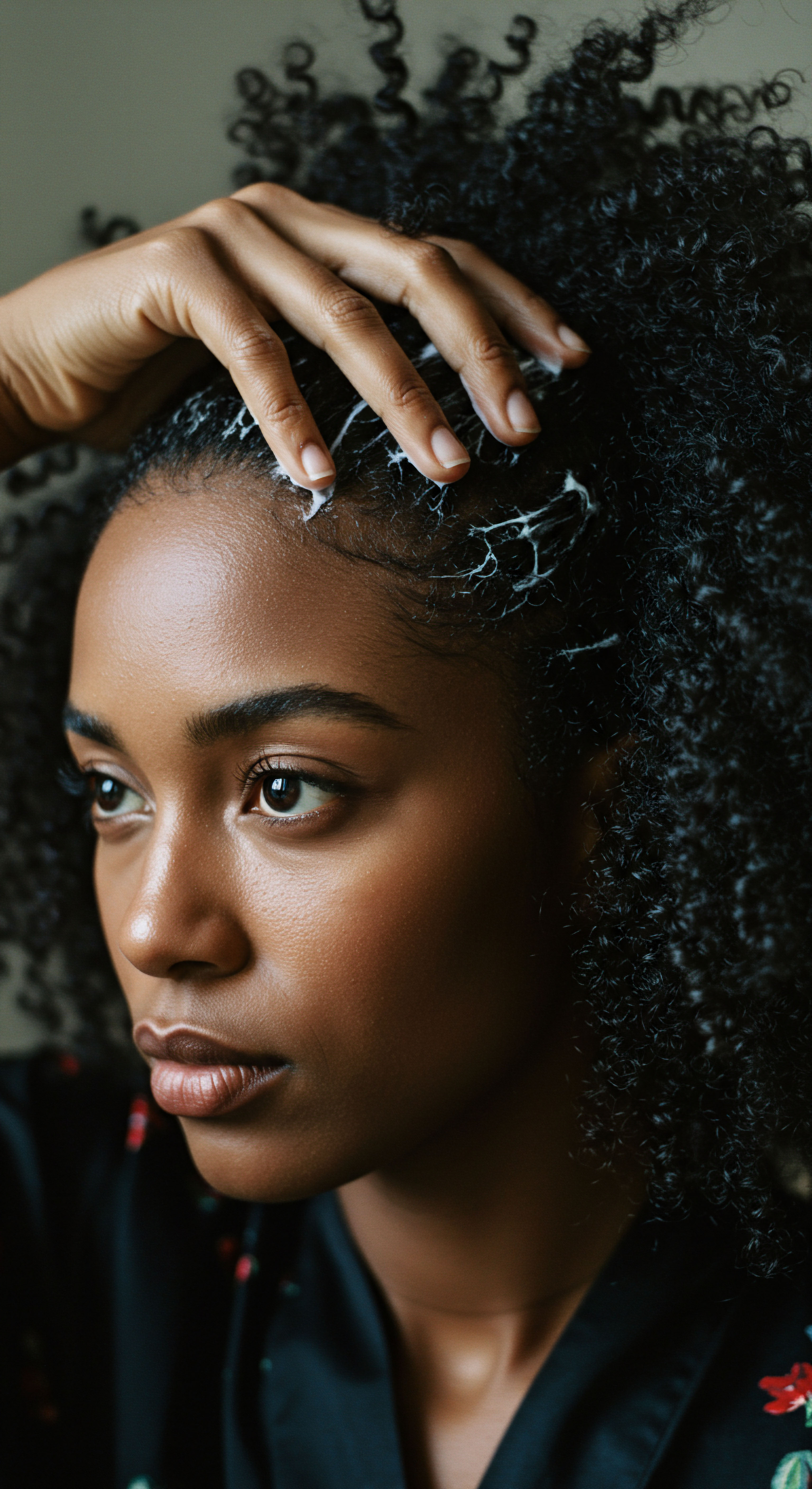
The Biophysics of Nighttime Hair Damage
The science of hair reveals a fascinating story of vulnerability and resilience. Textured hair, with its distinctive helical structure, possesses a unique relationship with moisture and mechanical forces. Each individual strand, composed of the inner Cortex and the outer Cuticle, responds to changes in humidity. When the air is dry, hair loses water, becoming brittle.
When humidity rises, it absorbs water, leading to swelling. This constant swelling and contracting can stress the hair fiber, particularly at the points where it bends and twists, making it prone to damage.
The impact of friction during sleep is well-documented in scientific literature. Studies have shown that the repeated rubbing of hair against a conventional cotton pillowcase can lift and chip the cuticle scales. A classic study, “Frictional Effects in Human Hair” by Schwartz and Knowles (1963), highlighted how friction from contact with various materials wears down the hair cuticle. More recent research, such as “Friction Dynamics of Straight, Curly, and Wavy Hair” by Bhushan et al.
(2014), notes that wavy and curly hair, with their increased points of contact, are particularly prone to this frictional damage. This physical abrasion directly compromises the hair’s ability to retain its internal moisture, leading to a dehydrated state that manifests as frizz.

How Does Sleep Quality Impact Hair Health?
Beyond the direct physical interaction, the quality of our sleep itself plays a subtle but significant part in hair health. During restorative sleep, the body undergoes vital processes of repair and regeneration. This includes the activity within hair follicles, which are continuously cycling through growth, transition, and resting phases.
Chronic sleep disruptions can impact hormonal balance and stress levels, potentially accelerating the transition of hair follicles into the resting phase, leading to increased shedding. While not a direct cause of frizz, compromised hair health from poor sleep can render strands more susceptible to environmental stressors and mechanical damage, making frizz more pronounced.

Cultural Echoes of Hair Coverings
The practice of covering hair during sleep extends far beyond its scientific benefits, carrying deep cultural and historical significance, particularly within Black communities. For centuries, headwraps and other hair coverings have been symbols of identity, status, and protection across African cultures. From the vibrant patterns of West African geles to the practical yet decorative wraps worn by women in the African diaspora, these coverings served multiple purposes ❉ shielding from the sun, signifying marital status, and indeed, preserving intricate hairstyles.
During periods of enslavement, head coverings in some contexts were forced upon Black women as a symbol of subjugation. Yet, through resilience and cultural reclamation, these same coverings became powerful symbols of resistance, dignity, and self-expression. The act of wrapping one’s hair, even in private for sleep, carries the quiet echoes of this rich heritage, a continuation of ancestral practices aimed at preserving both hair and spirit.

Can Covering Hair Truly Halt Frizz’s Advance?
Considering the confluence of biophysical realities and cultural practices, the answer to whether covering textured hair reduces morning frizz becomes a resounding affirmation. By providing a smooth, low-friction surface, coverings like silk or satin bonnets and pillowcases minimize the mechanical abrasion that lifts cuticles and saps moisture. This direct physical protection helps the hair maintain its internal hydration, keeping the cuticle scales smooth and aligned.
Research from TRI Princeton, as mentioned, provides concrete data. Their tests for measuring friction between hair and different fabrics showed luxury silk to be the smoothest, with significantly lower friction compared to cotton. This scientific grounding supports the long-held anecdotal evidence within the textured hair community.
When hair experiences less friction, it retains its moisture more effectively, and its natural curl pattern remains undisturbed, directly translating to less frizz upon waking. The practice of covering hair is not a mere trick; it is a scientifically sound method rooted in an understanding of hair’s delicate structure and its interaction with the world around it.
| Material Cotton |
| Approximate Friction Coefficient (μs) ~1.17 (high) |
| Impact on Hair High friction, moisture absorption, cuticle lifting, frizz, breakage |
| Material Satin |
| Approximate Friction Coefficient (μs) Lower than cotton, higher than silk |
| Impact on Hair Reduced friction, some moisture retention, generally good |
| Material Silk |
| Approximate Friction Coefficient (μs) ~0.21 (low) |
| Impact on Hair Minimal friction, excellent moisture retention, smooth cuticle |
| Material Lower friction coefficients correlate with less hair damage and frizz. |

Reflection
The journey through the intricate world of textured hair and its nightly care reveals more than just techniques for frizz reduction. It speaks to a profound connection between our personal rituals and the deeper understanding of our hair’s unique needs. From the microscopic dance of cuticles and moisture to the echoes of ancestral wisdom in a simple head covering, each element contributes to a holistic picture of hair wellness. The morning reveal, free from the wildness of frizz, becomes a quiet testament to the thoughtful choices made in the gentle hours of night, a celebration of hair preserved and honored.

References
- Schwartz, A. M. & Knowles, D. (1963). Frictional Effects in Human Hair. Journal of the Society of Cosmetic Chemists, 14(2), 67–73.
- Bhushan, B. Trinh, L. & Chen, N. (2014). Friction Dynamics of Straight, Curly, and Wavy Hair.
- Malinauskyte, E. Kang, X. & Gabarra, M. (2023). The Fabric Factor ❉ The Role of Your Pillowcase and Hair Accessories in Hair Care. TRI Princeton Studies.
- Drowsy Sleep Co. (n.d.). Sleep Masks and Hair Care ❉ Prevent Breakage and Frizz.
- Better Not Younger. (2024). Sleeping with Long Hair ❉ Avoid Breakage.
- Obé Headwear. (2024). Significance of Headwraps.
- Birico. (n.d.). Silk vs Cotton ❉ Which Pillowcase Is Better for Your Skin and Hair?
- Helix Hair Labs. (2023). Is Hair Breakage Happening While You Sleep?
- Collinge & Co. (2025). Hair Damage ❉ What Do I Need to Know?
- JD Institute of Fashion Technology. (2021). Headwraps ❉ History and Evolution.
- The Beauty Chef. (2022). Do Silk Pillowcases Really Benefit Your Hair and Skin?
- Dtex Homes. (2025). Which Pillowcase Is Better for Your Hair?
- Creative Support. (n.d.). The History of Black Hair.
- Wilderness Safaris. (2015). The History & Meaning of Head Wraps Across Africa.
- Sonson. (2021). The History of Headwraps and Black Culture.
- DiStefano Hair Restoration Center. (2025). Does Sleep Affect Hair Health?
- Markiewicz, E. & Idowu, O. C. (2024). Exploring the Use of Natural Ingredients for the Protection of Textured Hair from Ultraviolet Radiation ❉ An In Vitro Study. MDPI Preprints.
- I Love Riccio. (n.d.). How Not to Damage Curly Hair at Night.
- British Association of Dermatologists. (n.d.). Caring for Afro-textured Hair.